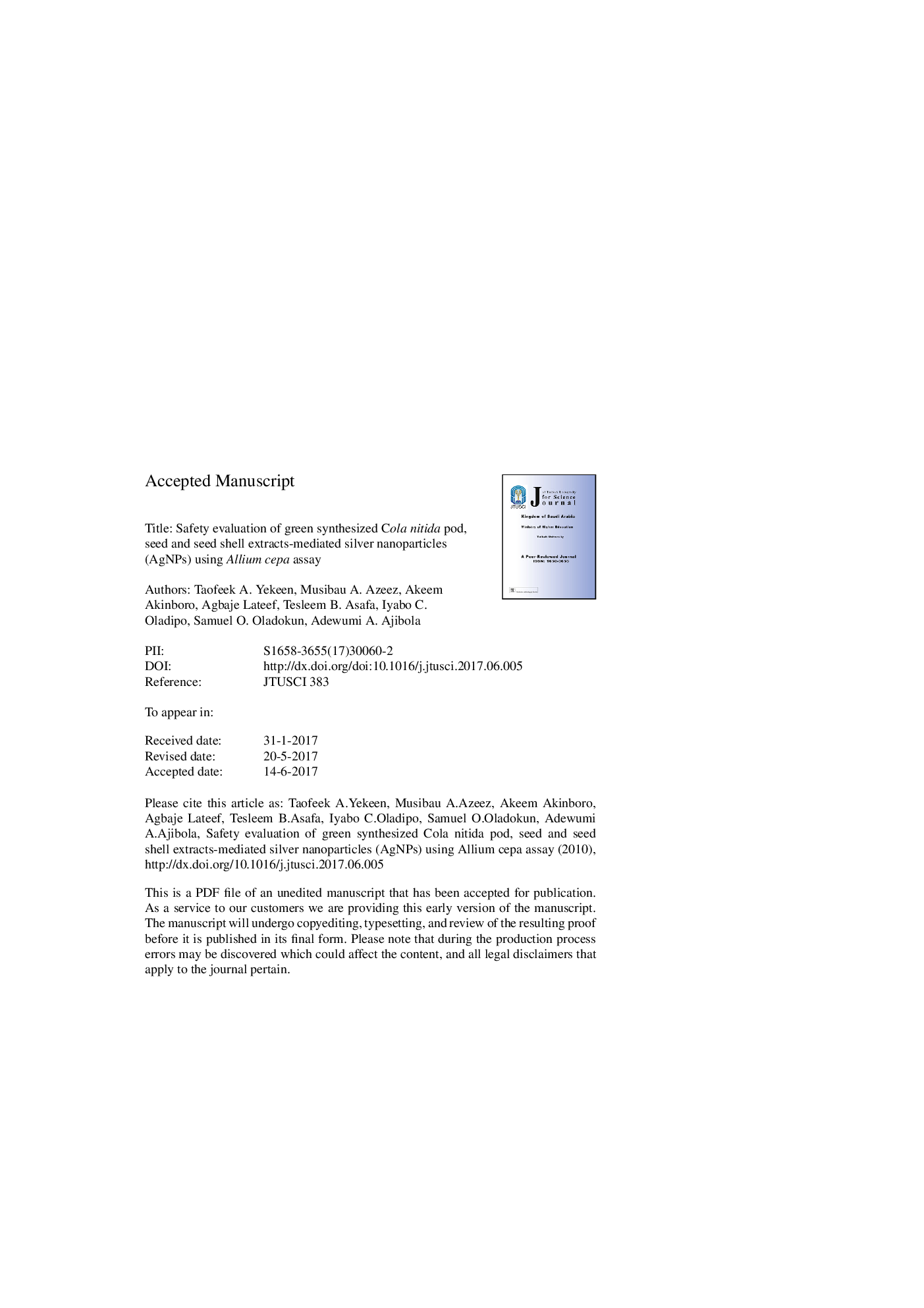| Article ID | Journal | Published Year | Pages | File Type |
|---|---|---|---|---|
| 7698457 | Journal of Taibah University for Science | 2017 | 27 Pages |
Abstract
The increase in the use of nanoparticles in various fields of human endeavours calls for the need to understand the toxic potential of green synthesized nanoparticles. Cytogenotoxic potentials of green synthesized Cola pod (Cp-AgNPs), seed (Cs-AgNPs) and seed shell (Css-AgNPs) silver nanoparticles and silver nitrate salts (Ags) were evaluated using an A. cepa assay. Twenty onion bulbs were exposed to 0.01, 0.10, 1.0, 10.0, and 100.0 μg/ml AgNPs and Ags solutions. Microscopic evaluation was performed at 24, 48 and 72 h with 5000 cells per concentration scored for chromosomal aberrations, while the effects on the root growth were evaluated at 72 h. The observed dividing cells and mitotic inhibition were dose-dependent for the three AgNPs and Ags at 24, 48 and 72 h. Mitotic index obtained for 1.0, 10 and 100 μg/mL at all times of evaluation were less than half the value of the negative control, while cell arrest was only observed at 72 h at a concentration of 100 μg/mL for the three AgNPs. The chromosomal aberrations observed were c-mitosis, a chromosome bridge, a vagrant chromosome, and a sticky chromosome, which indicate the potential of AgNPs for genotoxicity. The mean root length of A. cepa treated with AgNPs showed a dose-dependent significant decrease compared to the control, indicating their inhibitory potential, but the mean root lengths were found to be lower at all concentrations compared to those treated with Ags, thus showing the attenuation of growth inhibition. The EC50 values revealed the order of growth inhibition as Ags>Cp-AgNPs>Css-AgNPs>Cs-AgNPs. The cytogenotoxic potential of the AgNPs suggests that caution should be exercised in their usage to prevent environmental pollution.
Related Topics
Physical Sciences and Engineering
Chemistry
Chemistry (General)
Authors
Taofeek A. Yekeen, Musibau A. Azeez, Akeem Akinboro, Agbaje Lateef, Tesleem B. Asafa, Iyabo C. Oladipo, Samuel O. Oladokun, Adewumi A. Ajibola,
